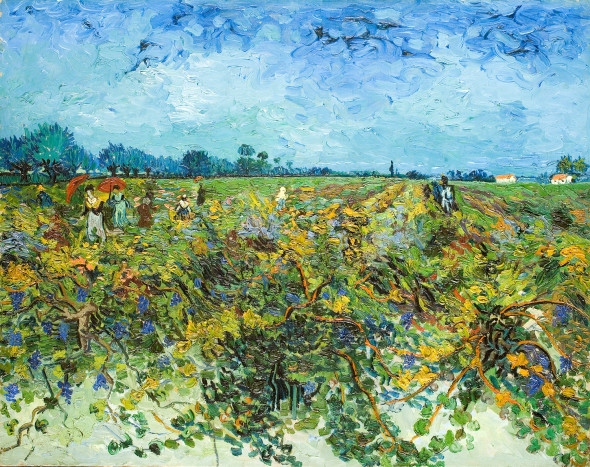A very important and crucial historical event, the Mediterranean Sea as a setting, and the art of painting as a mean of narrative and image making power, these are the basic elements of the exhibition “Alkis Pierrakos. The Naval Battle of Lepanto”, organized by the State Museum of Contemporary At of Thessaloniki and The J. F. Costopoulos Foundation. The exhibition will run from October 10, 2014 until January 10, 2015, at the SMCA venue in Moni Lazariston.
Ten years after his solo exhibition at the Contemporary Art Center, second venue of the SMCA, Alkis Pierrakos returns to Thessaloniki, his birthplace, with a series of new ink paintings on paper, that “illustrate” the historically critical for the development of European civilization Battle of Lepanto (October 1571), which established the European history and fate after the collision of the forces of the Christian Western world and Islam.
“At a time when the whole planet, and especially the Mediterranean, is witnessing an outbreak of war, violence, terror, social and political turmoil, economic crisis, the displacement of value systems and the rise of religious fanaticism, the work of A. Pierrakos serves as a reminder that art can operate both at a psychological and at a social level, as it revives and updates historical memory, conveys meanings and messages and stimulates feelings’ says the exhibition curator Katerina Koskina, SMCA President and Artisitc Director of The J. F. Costopoulos Foundation. And she continues “The images from the Battle allude to the daily parade of media images from present-day violent conflicts, which have devastating consequences and a great number of victims across the planet. Alkis Pierrakos’ European education and consciousness, perhaps also influenced by the violence conveyed by this inescapable news agenda, “sparked off” the creation of those works. With his meticulous attention to movement — the repetition of the theme; the dynamism of his forms and lines; the contrasts between light and shadow and white and black — the drawings look like a film projection, which alludes to a dramatic time that coincides with the very beginnings of human history. This is the space of what seems to be a natural urge of humans to fight each other— beyond the clashes between different civilisations, world-views, religions, values and beliefs systems, this perennial human tendency is primarily proof of the inability of the members of our species to co-exist peacefully and of their urge to impose their will on each other. But regardless of the conceptual or actual space, what is constantly reaffirmed is, beyond the self-sacrifice of those fighting for their ideas, the involuntary “sacrifice” of the simple recruits and of the civilians who are turned, especially in our day and age, into targets for implementing those very ideas.”
Exhibition coordination: Alexandros Papayiannis- Professor NTUA, Anna Mykoniati- Art Historian, SMCA Curator
This exhibition is made possible due to the support of the “Association for the Promotion of the Work of Alkis Pierrakos”. The next stops for the exhibition “Alkis Pierrakos: The Naval Battle of Lepanto” will be Athens, at the Nikos Hadjikyriakos-Ghika Gallery (January-March 2015) and Corfu, at a chapel of the city’s Catholic Cathedral (April-June 2015), with the support of the 21st Ephorate of Byzantine Antiquities and Mr. Spiro Flamburiari.
Bographical Notes
Born on November 21st, 1920, in Thessaloniki,Greece. Until 1947 he lived in Yugoslavia, Thessaloniki and Athens. He studied at the Gewerbeschule of Basel (1948-1952), at the Slade School of Fine Arts and at the Central School of Arts and Crafts of London, where he met Oskar Kokoschka. In 1954 he moved permanently to Paris, where he lives and works until today. Since 1980 he has been working for long periods at Oxylithos, Evia. He has been a member and the co-ordinator of the group “La Ligne et le Signe”, which aimed to combine the limitations of drawing with the freedom of colour. In 1995 the “Association pour la Promotion de l’oeuvre d’ A. Pierrakos (APOAP)” was established.
His works have been presented in numerous solo and group exhibitions in Greece and abroad.
Supporter
“Association pour la Promotion de l’ Oeuvre d’ A. Pierrakos” (APOAP)

State Museum of Contemporary Art , Thessaloniki, Greece, Alkis Pierrakos. The Naval Battle of Lepanto

State Museum of Contemporary Art , Thessaloniki, Greece, Alkis Pierrakos. The Naval Battle of Lepanto

State Museum of Contemporary Art , Thessaloniki, Greece, Alkis Pierrakos. The Naval Battle of Lepanto

State Museum of Contemporary Art , Thessaloniki, Greece, Alkis Pierrakos. The Naval Battle of Lepanto
Source: State Museum of Contemporary Art , Thessaloniki, Greece









































